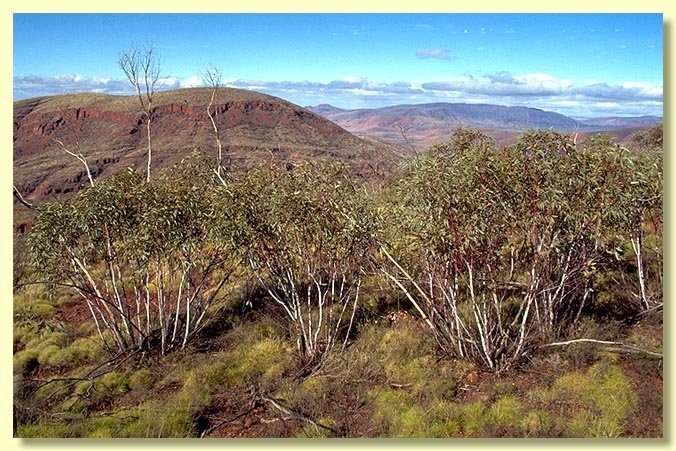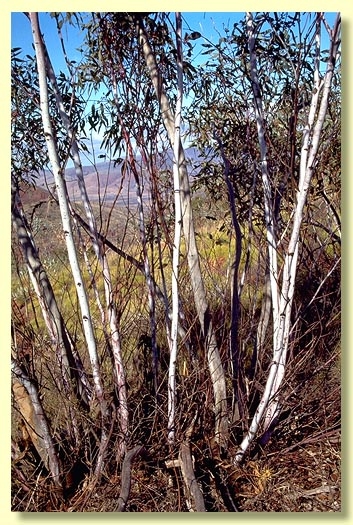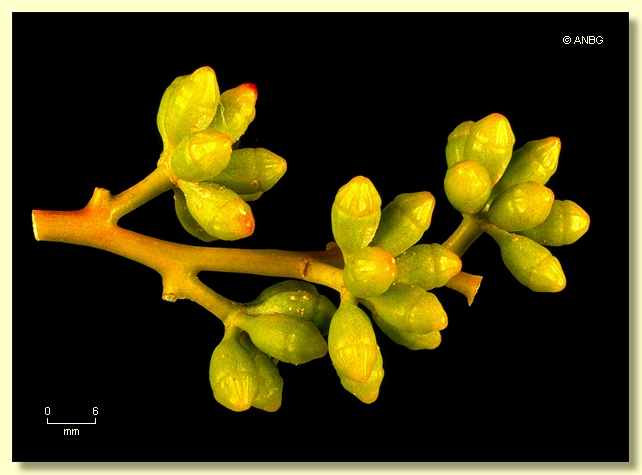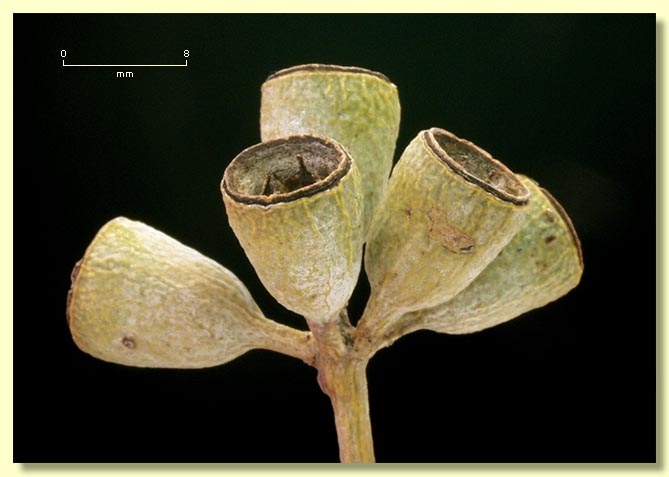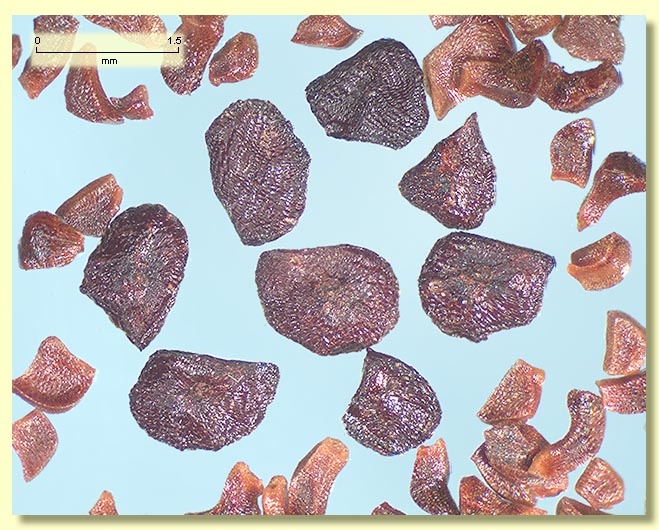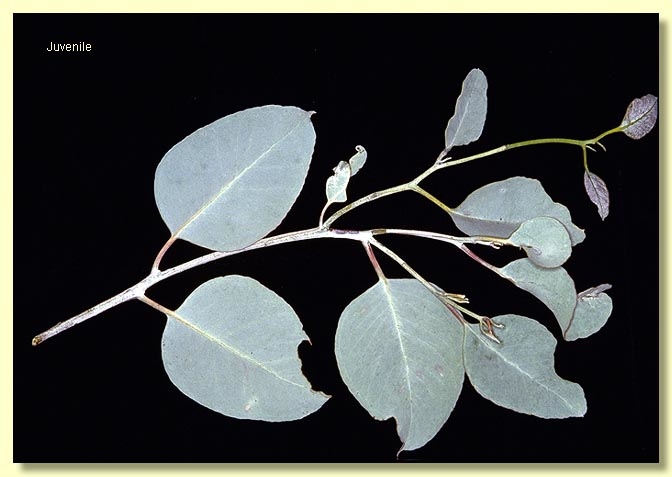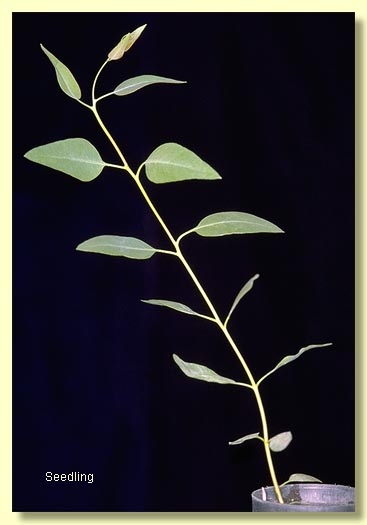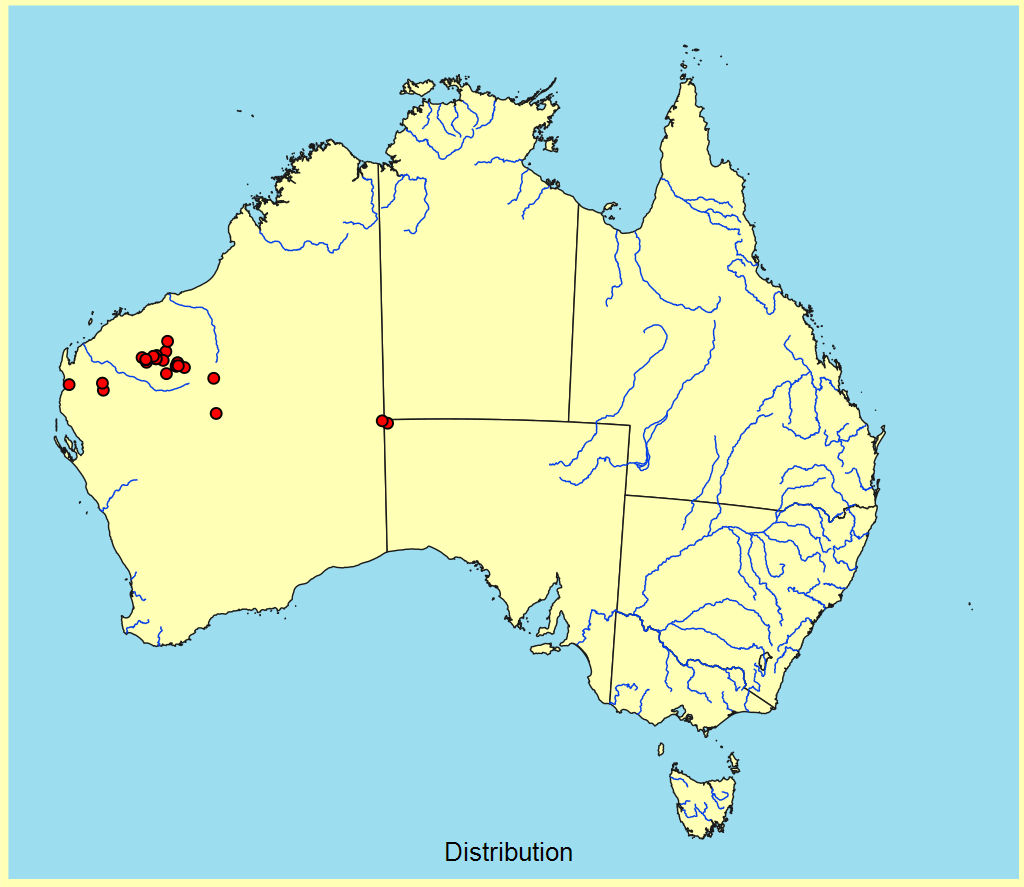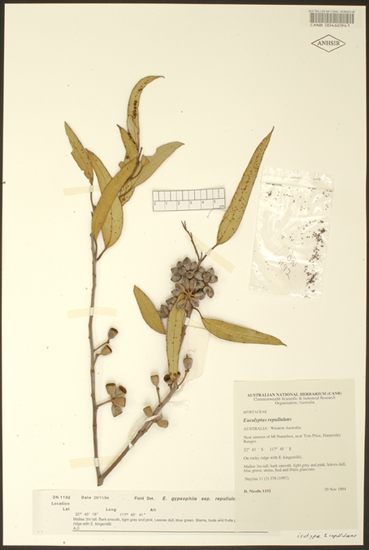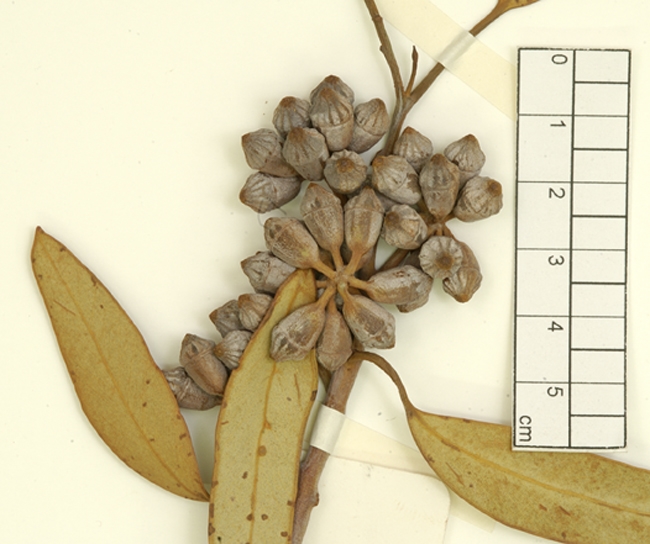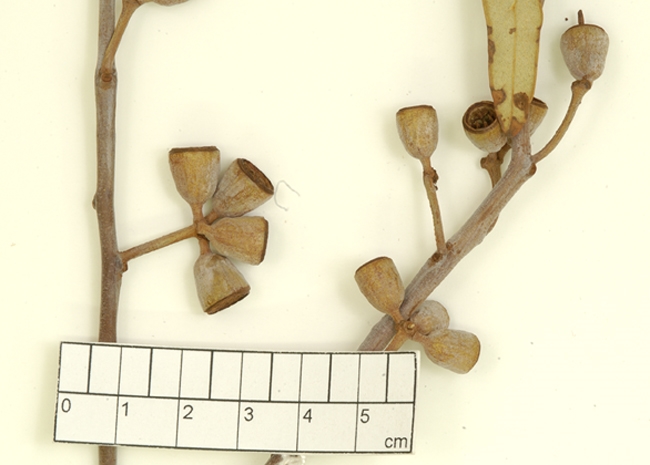Eucalyptus | Symphyomyrtus | Dumaria | Rufispermae
Euclid - Online edition
Eucalyptus repullulans
Mallee to 5 m tall. Forming a lignotuber.
Bark smooth throughout, rarely with a very short stocking of rough fibrous bark. Smooth bark white to pinkish orange and light grey, shedding in ribbons.
Branchlets have oil glands in the pith; glaucous or non-glaucous.
Juvenile growth (coppice or field seedlings to 50 cm): stems rounded or square in cross-section, glaucous; juvenile leaves always petiolate, alternate, ovate or rarely deltoid, 4–8 cm long, 2.2–4 cm wide, glaucous.
Adult leaves alternate, petioles 1.2–3.1 cm long; blade lanceolate to broadly so, or sometimes falcate, 6.2–13.5(16) cm long, 1–2.8 cm wide, base tapering to petiole, margin entire, apex pointed, concolorous, dull, blue to blue-green or grey-green, rarely glaucous, side-veins at an acute or wider angle to the midrib, reticulation dense to very dense, intramarginal vein present, oil glands mostly intersectional.
Inflorescence axillary single, peduncles rounded to angular, 0.6–2 cm long, buds 7, 9, 11 or 13, pedicellate, pedicels 0.3–0.5 cm long. Mature buds pyriform or cylindrical (0.8–1.2 cm long, 0.5–0.6 cm wide), glaucous or non-glaucous, scar present (outer operculum shed early), inner operculum conical to beaked (0.35–0.5 cm long), radially striate, stamens inflexed, all fertile, anthers versatile, dorsifixed, cuboid to wedge shaped, dehiscing by longitudinal slits, style long and straight, stigma tapering, locules 4(5), the placentae each with 4 vertical ovule rows. Flower colour not known.
Fruit pedicellate, pedicels 0.1–0.6 cm long, elongated cup-shaped to cylindrical or obconical, 0.7–1.2 cm long, (0.6)0.7–0.9 cm wide, glaucous or non-glaucous, disc descending obliquely, valves 4(5), at rim-level or enclosed.
Seeds reddish brown and glossy, 1–2 mm long, flattened-ovoid, dorsal surface often lacunose, shallowly reticulate, hilum ventral.
Cultivated seedlings (measured at ca node 10): cotyledons reniform; stems square to rounded in cross-section, glaucous or not so; leaves always petiolate, opposite for 3 to 6 nodes then becoming alternate, ovate, 2–7.2 cm long, 0.9–3 cm wide, dull, green, or glaucous but usually only on new growth.
Flowering has been recorded in May.
An arid zone mallee occurring mainly in the Pilbara region of Western Australia, where it grows in the Hamersley Ranges on rocky sites in hummock grasslands with scattered low-growing eucalypts. It also occurs disjunctly on the Wingellina Hills (Western Australia) and the nearby Dulgunja Hill (South Australia). Eucalyptus repullulans can be recognised by its whitish smooth bark, bluish green crown, more or less cylindrical fruit and shiny red seeds.
In the classification of Brooker (2000) Eucalyptus repullulans belongs in Eucalyptus subgenus Symphyomyrtus section Dumaria having these features: buds initially with two opercula the outer shed early, stamens strongly inflexed, ovules in 4 rows on the placentae and cotyledons reniform. Within section Dumaria the species belongs to a large sub-group of closely related species (series Rufispermae, 37 described species and subspecies) diagnosed by glandular pith in the branchlets, cuboid to wedge shaped versatile anthers, and by the reddish brown and glossy, flattish seeds which are unique to the series.
Within series Rufispermae, E. repullulans was long regarded as part of E. striaticalyx, but Nicolle in 1997 revised this group of species, segregating these northern populations as a different species on the following combination of characters—bark essentially smooth, mallee habit, rocky habitat and geographic isolation. The most closely related species is E. gypsophila, which is a half rough-barked mallee with a wide distribution from south of the Pilbara in the Kennedy Range to the Great Victoria Desert of Western Australia and South Australia. E. striaticalyx differs in being a tree (possibly lacking a lignotuber) with rough bark over the lower trunk and is never glaucous. It occurs from near Meekatharra east to the Gibson Desert and south-east to the fringes of the Great Victoria Desert in Western Australia.
Eucalyptus repullulans: Latin repullulans, sprouting again, referring to the presence of a lignotuber.

